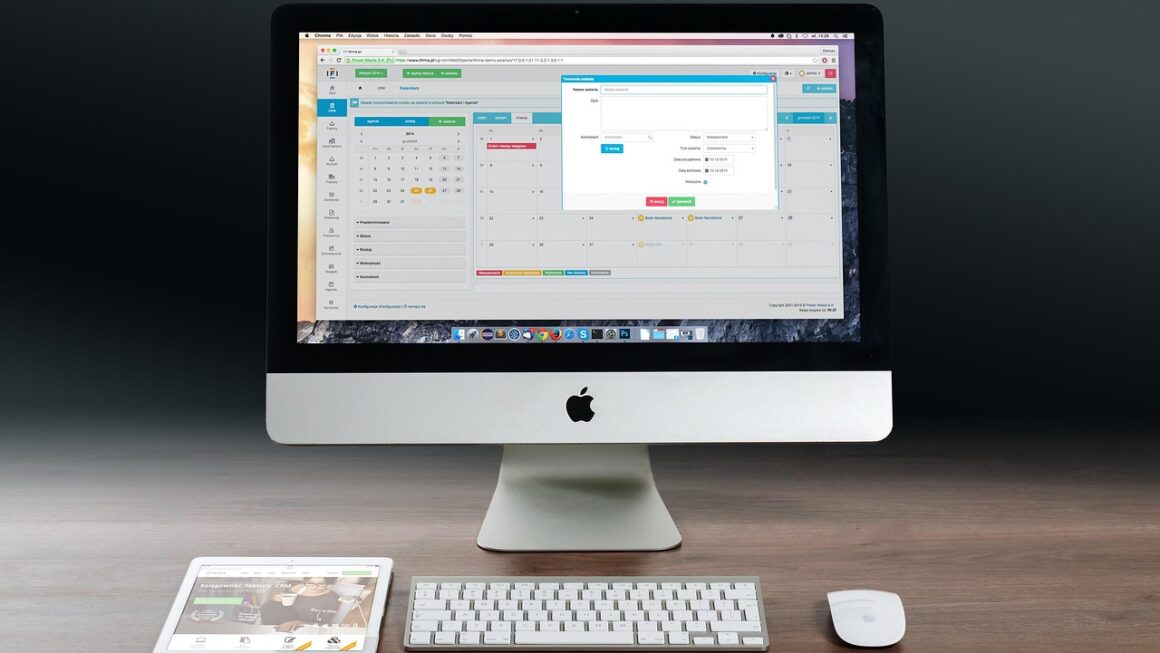Digital HR is no longer a futuristic concept; it’s the present and future of human resource management. In today’s rapidly evolving business landscape, organizations that embrace digital HR strategies gain a significant competitive advantage. By leveraging technology, HR departments can streamline processes, enhance employee experiences, and drive data-driven decision-making. This blog post will delve into the core aspects of digital HR, providing practical insights and actionable takeaways for HR professionals looking to transform their function.
What is Digital HR?
Digital HR encompasses the use of technology to optimize and transform all aspects of human resource management. It’s about moving beyond traditional, paper-based processes to embrace digital solutions that improve efficiency, accuracy, and employee engagement. Digital HR is not merely about digitizing existing processes; it’s about rethinking and re-engineering them for the digital age.
Core Components of Digital HR
- HR Software (HRIS/HRMS): The backbone of digital HR, HRIS/HRMS platforms centralize employee data, automate administrative tasks, and provide reporting capabilities. Examples include Workday, BambooHR, and SAP SuccessFactors.
- Cloud Computing: Storing HR data and applications in the cloud offers scalability, accessibility, and cost savings.
- Mobile HR: Providing employees with mobile access to HR services, such as time tracking, benefits information, and learning resources, enhances convenience and engagement.
- Data Analytics: Leveraging data to gain insights into workforce trends, identify areas for improvement, and make data-driven decisions.
- Artificial Intelligence (AI): Automating tasks, improving recruitment processes, and personalizing employee experiences through AI-powered tools.
- Automation: Automating routine HR tasks, such as onboarding, payroll, and benefits administration, frees up HR professionals to focus on more strategic initiatives.
The Difference Between HR and Digital HR
Traditional HR typically involves manual processes, paper-based forms, and limited use of technology. Digital HR, on the other hand, leverages technology to automate tasks, improve efficiency, and provide a better employee experience. Consider the example of performance reviews. Traditional HR might involve paper-based forms and manual data entry. Digital HR would use an online platform for performance evaluations, automated feedback collection, and real-time performance tracking.
Benefits of Implementing Digital HR
Implementing digital HR strategies offers numerous benefits for organizations, impacting everything from cost savings to employee satisfaction.
Increased Efficiency and Productivity
- Automation: Automating repetitive tasks like onboarding and payroll reduces manual effort and minimizes errors. Studies show that automating HR processes can reduce administrative costs by up to 40%.
- Centralized Data: A single source of truth for employee data eliminates data silos and improves data accuracy.
- Self-Service: Empowering employees to access information and complete tasks themselves, such as updating their contact information or requesting time off, reduces the burden on HR staff.
Enhanced Employee Experience
- Mobile Access: Providing employees with mobile access to HR services improves convenience and engagement.
- Personalization: Tailoring HR programs and communications to individual employee needs and preferences. For example, personalized learning recommendations based on an employee’s skills and career goals.
- Improved Communication: Digital communication channels, such as instant messaging and collaboration platforms, facilitate faster and more effective communication.
Data-Driven Decision Making
- Real-Time Analytics: Access to real-time data and analytics enables HR professionals to make informed decisions based on workforce trends. For example, identifying employee turnover patterns and implementing strategies to improve retention.
- Predictive Analytics: Using predictive analytics to forecast future workforce needs and identify potential risks.
- Improved Reporting: Generating customized reports to track key HR metrics, such as employee engagement, performance, and absenteeism.
Cost Savings
- Reduced Paperwork: Eliminating paper-based processes reduces printing and storage costs.
- Streamlined Processes: Automating HR tasks improves efficiency and reduces administrative overhead.
- Improved Compliance: Automated compliance tracking reduces the risk of penalties and fines.
Implementing a Digital HR Strategy: A Step-by-Step Guide
Transforming to digital HR requires a strategic approach. It’s not just about adopting new technologies, but about aligning those technologies with your business goals.
Assess Your Current State
- Identify Pain Points: Conduct a thorough assessment of your current HR processes to identify areas where technology can improve efficiency and effectiveness.
- Evaluate Existing Technology: Review your existing HR systems and identify gaps in functionality.
- Define Goals and Objectives: Clearly define your goals and objectives for digital HR transformation. What do you hope to achieve? Reduced costs? Improved employee engagement? Better data insights?
Choose the Right Technology
- Research HR Software: Explore different HR software solutions and choose one that meets your specific needs and budget. Consider factors such as functionality, scalability, and integration capabilities.
- Consider Cloud vs. On-Premise: Decide whether to deploy your HR software in the cloud or on-premise. Cloud-based solutions offer greater flexibility and scalability, while on-premise solutions may provide greater control over data security.
- Prioritize Integration: Ensure that your HR software integrates seamlessly with your other business systems, such as payroll, accounting, and CRM.
Develop a Change Management Plan
- Communicate the Vision: Clearly communicate the benefits of digital HR to your employees and stakeholders.
- Provide Training: Provide adequate training to employees on how to use the new HR systems and technologies.
- Address Concerns: Address any concerns or resistance to change from employees.
Pilot and Roll Out
- Start Small: Begin by implementing digital HR in a specific department or function before rolling it out across the entire organization.
- Gather Feedback: Collect feedback from employees throughout the implementation process and make adjustments as needed.
- Monitor Progress: Track key metrics to measure the success of your digital HR transformation.
Key Technologies in Digital HR
The digital HR landscape is constantly evolving, with new technologies emerging all the time. However, some technologies are essential for any successful digital HR transformation.
HRIS/HRMS Platforms
- Core HR Functionality: Managing employee data, payroll, benefits, and compliance.
- Talent Management: Recruiting, onboarding, performance management, and learning and development.
- Analytics and Reporting: Providing insights into workforce trends and performance.
Applicant Tracking Systems (ATS)
- Automating Recruitment: Streamlining the recruitment process, from posting job openings to screening resumes to scheduling interviews.
- Improving Candidate Experience: Providing a user-friendly application process and timely communication with candidates.
- Data-Driven Hiring: Tracking key metrics to measure the effectiveness of recruitment efforts.
Learning Management Systems (LMS)
- Delivering Online Training: Providing employees with access to online courses, videos, and other learning resources.
- Tracking Training Progress: Monitoring employee training progress and identifying areas for improvement.
- Personalized Learning: Tailoring learning recommendations to individual employee needs and preferences.
Employee Engagement Platforms
- Gathering Feedback: Conducting employee surveys and pulse checks to gather feedback on employee satisfaction and engagement.
- Facilitating Communication: Providing a platform for employees to communicate with each other and with management.
- Recognizing and Rewarding Employees: Providing a platform for recognizing and rewarding employees for their contributions.
AI and Automation Tools
- Chatbots: Providing employees with instant answers to common HR questions.
- Automated Onboarding: Streamlining the onboarding process by automating tasks such as paperwork and system access.
- Predictive Analytics: Using predictive analytics to identify employees who are at risk of leaving the organization.
Conclusion
Digital HR is transforming the way organizations manage their workforce. By embracing technology, HR departments can improve efficiency, enhance employee experiences, and drive data-driven decision-making. While the journey to digital HR requires careful planning and execution, the benefits are undeniable. Organizations that invest in digital HR strategies will be well-positioned to attract, retain, and develop top talent in today’s competitive business environment. The future of HR is digital, and now is the time to embrace it.




